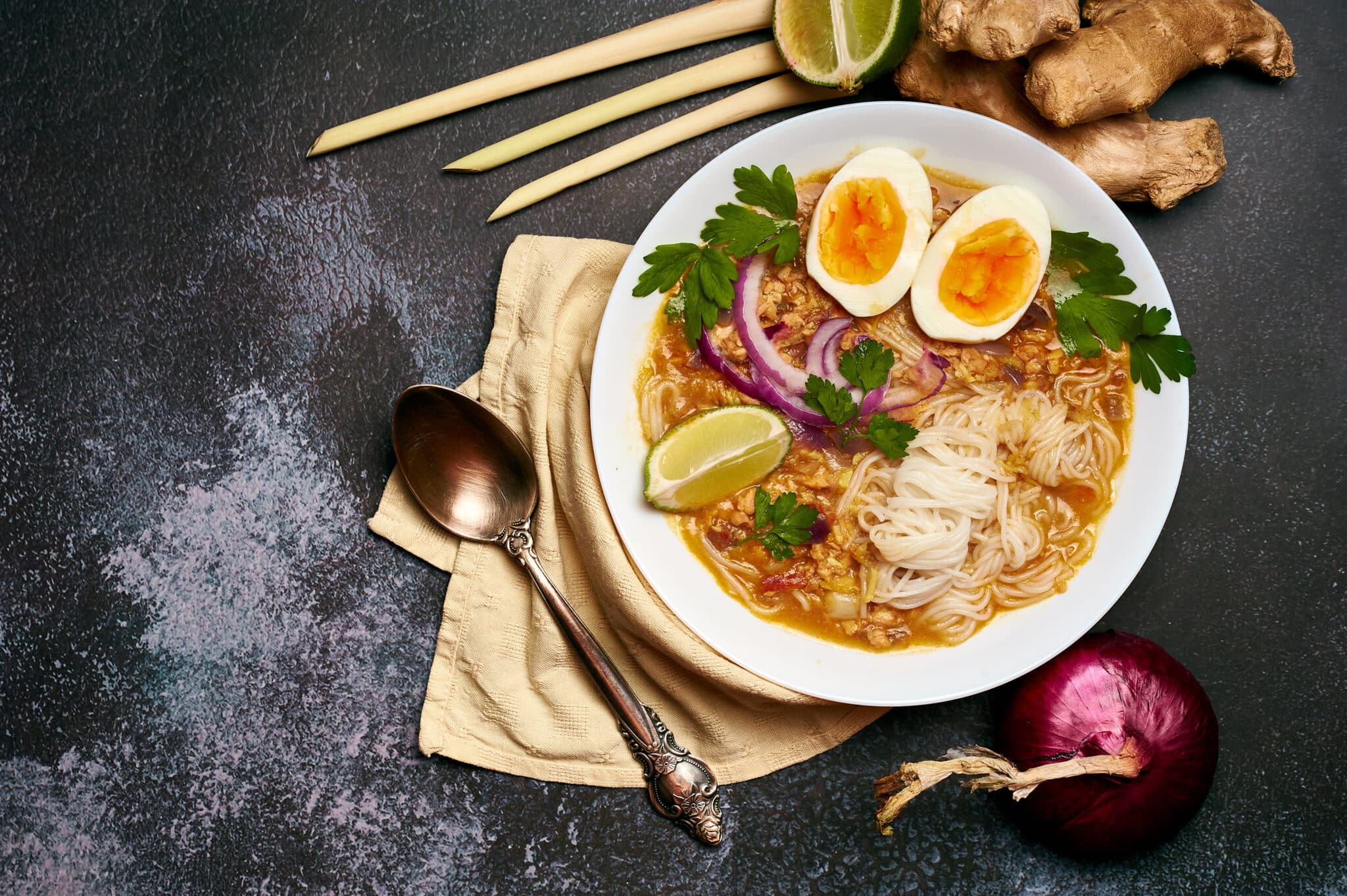Every nation has a cuisine that embodies its history, culture, and way of life. Mohinga, a flavorful rice noodle soup with a creamy broth made from fish, is that cuisine for Myanmar. Mohinga is more than simply food; it’s a symbol of Myanmar’s customs, warmth, and everyday rhythm. It is a genuine national favorite since it is loved everywhere, from busy city streets to modest hamlet get-togethers.
Mohinga’s Beginnings
Mohinga’s history goes back many centuries. It is thought to have started in riverine areas when rice was a staple and fresh fish was plentiful. Cooks gradually blended these essential components with regional herbs, spices, and chickpea flour to produce a filling soup that was good for the body and the soul. Because it was simple to make in big amounts, it became a popular dish for families and get-togethers.
The Components of Mohinga
Mohinga is fundamentally a harmony of flavors. The soup has depth and richness because it contains fish, onions, garlic, lemongrass, ginger, and chickpea flour. Rice noodles serve as the foundation, and texture and variation are supplied by the addition of crispy fritters, boiled eggs, banana stems, and fresh herbs. Each diner can customize the dish to suit their preferences with the addition of condiments such fish sauce, lime, and chili flakes.
A Recipe for Every Hour of the Day
In Myanmar, mohinga is frequently consumed for breakfast, in contrast to many noodle soups in Asia that are typically consumed for lunch or evening. Locals on their way to work or school are served steaming bowls by street vendors who frequently set up shop early in the morning. Nonetheless, because of its widespread consumption, it is a satisfying and adaptable meal that is consumed throughout the day.
Mohinga’s Cultural Significance
Mohinga is a cultural icon that is more than just food. It symbolizes the inventiveness of the people of Myanmar, who employ regional ingredients to produce incredibly delectable dishes. Large pots of Mohinga are shared among guests during festivals, family get-togethers, and community activities, when it also plays a significant role. It brings back childhood memories and a sense of belonging for many people.
Regional Differences
Regional differences give Mohinga’s story more depth, even if the essence of the festival is the same throughout the nation. The broth is thicker and hotter in Upper Myanmar and lighter and more delicate in Lower Myanmar. Because local flavors, ingredients, and customs are reflected in each iteration, mohinga is a cuisine that unites and diversifies the country.
The National Dish’s Reasons
In addition to its taste, mohinga’s cultural significance makes it Myanmar’s national dish. People from all walks of life adore it, and it is widely accessible and reasonably priced. Its capacity to unite people, whether at a roadside stand or during family get-togethers, embodies Myanmar’s warmth and sense of community.
Concluding remarks
More than just a noodle soup, mohinga is a representation of Myanmar’s past, present, and culture. It is a dish that brings the country together because of its modest beginnings, tasty ingredients, and function in everyday life. Mohinga proudly enjoys the title of Myanmar’s national cuisine because it embodies the character and kindness of the country.

Leave a Reply